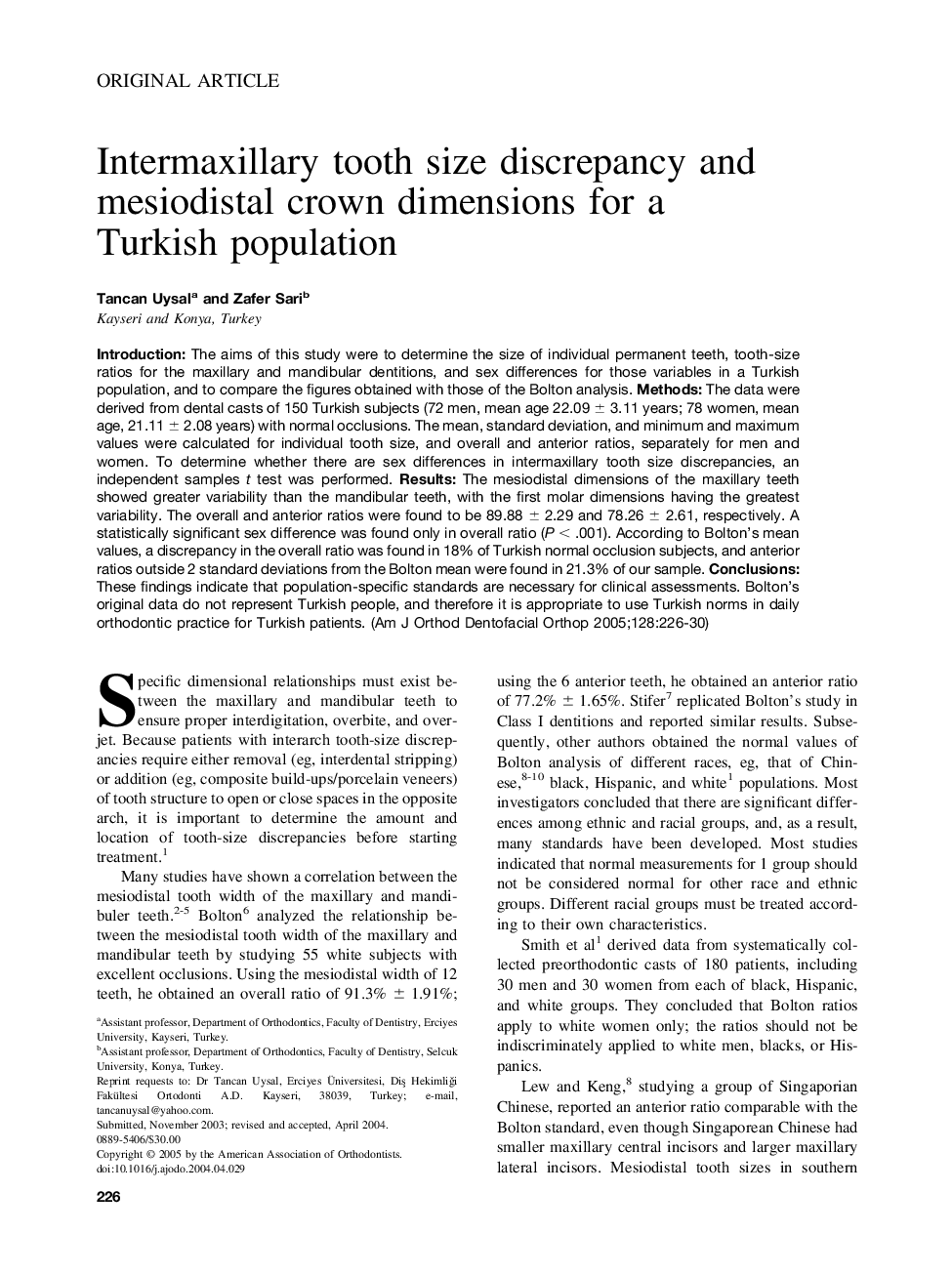| Article ID | Journal | Published Year | Pages | File Type |
|---|---|---|---|---|
| 9992743 | American Journal of Orthodontics and Dentofacial Orthopedics | 2005 | 5 Pages |
Abstract
Introduction: The aims of this study were to determine the size of individual permanent teeth, tooth-size ratios for the maxillary and mandibular dentitions, and sex differences for those variables in a Turkish population, and to compare the figures obtained with those of the Bolton analysis. Methods: The data were derived from dental casts of 150 Turkish subjects (72 men, mean age 22.09 ± 3.11 years; 78 women, mean age, 21.11 ± 2.08 years) with normal occlusions. The mean, standard deviation, and minimum and maximum values were calculated for individual tooth size, and overall and anterior ratios, separately for men and women. To determine whether there are sex differences in intermaxillary tooth size discrepancies, an independent samples t test was performed. Results: The mesiodistal dimensions of the maxillary teeth showed greater variability than the mandibular teeth, with the first molar dimensions having the greatest variability. The overall and anterior ratios were found to be 89.88 ± 2.29 and 78.26 ± 2.61, respectively. A statistically significant sex difference was found only in overall ratio (P < .001). According to Bolton's mean values, a discrepancy in the overall ratio was found in 18% of Turkish normal occlusion subjects, and anterior ratios outside 2 standard deviations from the Bolton mean were found in 21.3% of our sample. Conclusions: These findings indicate that population-specific standards are necessary for clinical assessments. Bolton's original data do not represent Turkish people, and therefore it is appropriate to use Turkish norms in daily orthodontic practice for Turkish patients.
Related Topics
Health Sciences
Medicine and Dentistry
Dentistry, Oral Surgery and Medicine
Authors
Tancan Uysal, Zafer Sari,
